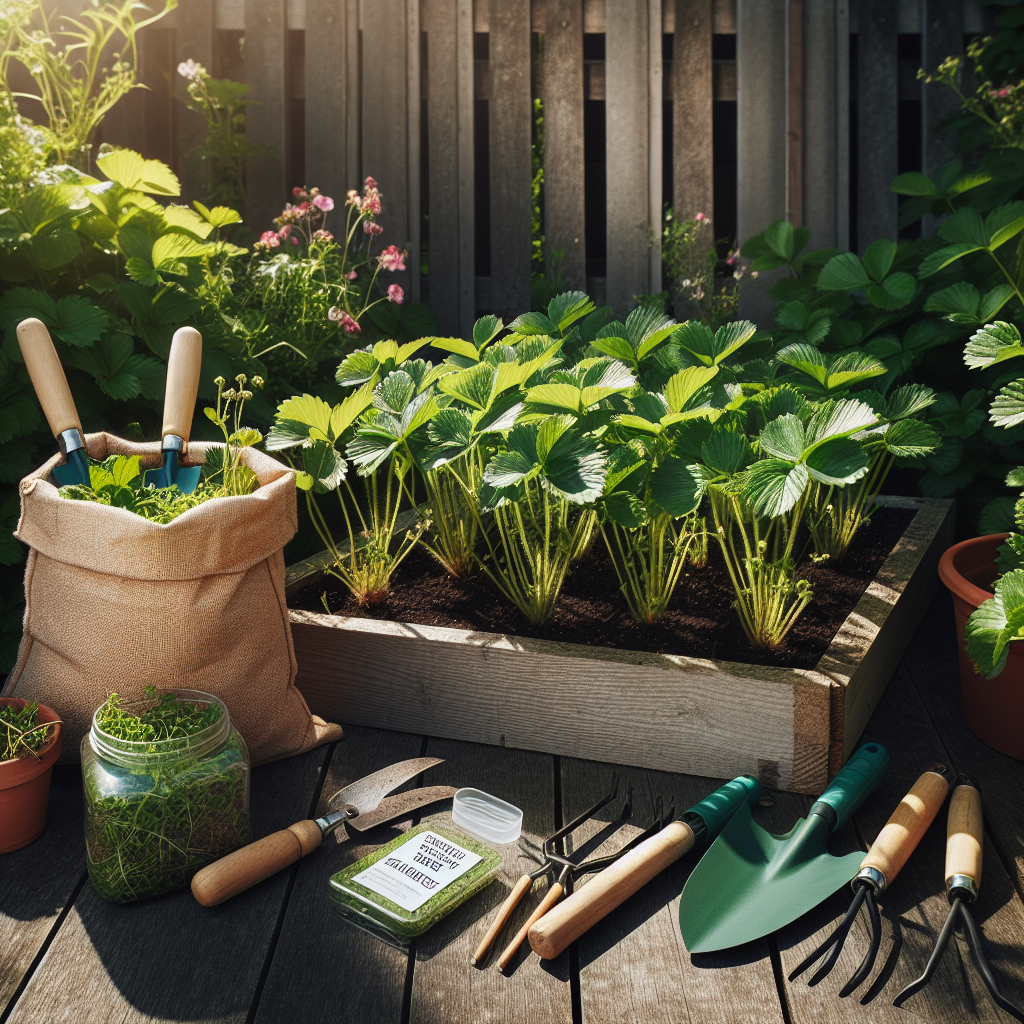Preventing Leaf Blister on Oak Trees
Updated June 1, 2024 at 1:59 am
Discover effective strategies to safeguard your oak trees from the unsightly and damaging effects of leaf blister, ensuring a healthy and beautiful landscape throughout the seasons.

“`html
Understanding Oak Leaf Blister and Its Causes
Oak leaf blister is a disease that affects oak trees, causing unsightly blemishes on the leaves. It’s caused by the fungus Taphrina caerulescens, which creates noticeable, round, raised areas on the upper leaf surface. These blisters can be a source of stress for your beloved oaks.
The fungus infects the leaves early in the spring as they are emerging, which means prevention is key. Once the leaves are infected and symptoms appear, it’s too late to treat that year’s outbreak.
Identifying Symptoms of Oak Leaf Blister
Detecting oak leaf blister early can be challenging because symptoms typically develop after the fungus has already infected the tree. Look for small, circular blisters on the leaves, usually lighter in color than the surrounding tissue. As the season progresses, these blisters may turn brown and cause the leaves to curl or distort.
While oak leaf blister is mostly cosmetic and doesn’t generally result in severe damage to healthy trees, it can weaken trees that are already stressed, making them more susceptible to other issues.
Cultural Practices for Preventing Oak Leaf Blister
Preventing oak leaf blister starts with good cultural practices. Keeping your oaks healthy increases their resistance to disease. Ensure your trees have enough space for air to circulate around them, and avoid overwatering or planting in poorly drained soil to reduce the risk of fungal infections.
Pruning is also essential, not only to shape the tree but to eliminate dead or crossing branches that can harbor disease. It’s easier on the tree to prune during dormancy, typically late winter, before new growth starts and the fungus has a chance to spread.
Cultural Practice Breakdown:
-
Pruning:
- Remove dead or diseased wood to prevent spread
- Ensure proper air circulation with strategic cuts
- Water deeply but infrequently to promote strong root growth
- Avoid standing water to reduce fungal habitat
- Enrich soil with organic material to boost tree immunity
- Ensure proper drainage to discourage fungus-friendly environments
Watering:
Soil Health:
Recommended Treatments for Oak Leaf Blister
It might require a multipronged approach to manage oak leaf blister effectively. The use of fungicidal treatments can help protect the tree from infection, especially when applied early in the season before symptoms appear.
Bordeaux mixture, a copper-based fungicide, has been traditionally used to manage fungal diseases on trees, and it could be effective against oak leaf blister. It’s crucial, though, to follow the manufacturer’s instructions when applying any chemical treatment to your trees.
When to Apply Fungicides for Optimal Protection
The timing of fungicide application is critical. The best prevention happens when you spray fungicides during the dormant season or early spring as buds begin to swell but before they have fully opened. This timing helps to stop the fungus from infecting the new leaves as they emerge.
If you’ve had a history of oak leaf blister in your trees, preventative fungicidal sprays might be necessary annually to maintain healthy foliage.
Organic Alternatives for Oak Tree Health
For those preferring organic methods, consider neem oil or sulfur-based sprays, which are less harsh on the environment. These alternatives can act as both a preventative and a treatment if applied correctly and consistently.
Neem oil works by disrupting the life cycle of pests and diseases, and it’s considered safe for beneficial insects when used as directed. When it comes to sulfur sprays, they are one of the oldest known pesticides and can help in controlling various fungal diseases.
Choosing the Right Products: Fungicides on the Market
Let’s dive into some products that you might consider for preventing and treating oak leaf blister, based on popular choices and strong reviews from fellow garden enthusiasts.
One option is the Bonide Copper Fungicide. This product is a Bordeaux mix alternative that many gardeners swear by. It’s touted for being effective on a range of fungal diseases and for use in organic gardening, being OMRI listed.
Pros:
- OMRI listed for organic use
- Effective on multiple diseases
- Can be used on vegetables and ornamentals as well as trees
Cons:
- May require multiple applications
- Can be harmful to some aquatic organisms
- Might stain concrete or other surfaces
Find This and More on Amazon
Integrating Preventative Maintenance Into Your Gardening Routine
Incorporating preventative sprays for diseases like oak leaf blister can be a cornerstone of your annual gardening routine. By scheduling applications when the trees are dormant, you’re creating a protective barrier that safeguards the plants throughout the growing season.
Making this a part of your regular gardening practice can save you time and energy by preventing disease outbreaks before they start and maintaining the aesthetic beauty of your garden.
Monitoring Trees for Early Signs of Infection
It’s essential for oak tree owners to regularly monitor their trees for signs of leaf blister. Early detection can make management much more straightforward and prevent the spread to other foliage.
Look for unusual patterns on the leaves as they unfurl in spring and consult with a local arborist or extension office if you suspect oak leaf blister or any other tree diseases.
Maintaining a Healthy Garden Ecosystem
A holistic approach to gardening, where you give attention to the health of the entire ecosystem, can be beneficial in preventing diseases like oak leaf blister. This includes nurturing the soil, encouraging beneficial insects, and using companion planting to heighten plant resilience.
By improving the overall wellness of your garden, you’re not only making it a more inviting place for you and wildlife, but also creating unfavourable conditions for diseases and pests to gain a foothold.
The Impact of Climate on Disease Development
It’s worth noting that climate can influence the prevalence and severity of oak leaf blister. Wet, cool springs may promote fungal growth, so being aware of weather patterns and adapting your care schedule accordingly could help manage this disease.
Taking steps like postponing irrigation during damp weather or adjusting the timing of fungicide applications in relation to forecasted weather conditions can be effective strategies.
Learning More About Plant Care in Challenging Environments
If you’re looking for additional resources on caring for plants in less-than-ideal conditions, you might want to check out strategies for maintaining Dracaena in low light settings or discover how to create a pollinator-friendly vegetable garden, which can both offer insights beneficial to overall plant health.
These resources can provide tips that are applicable to many gardening scenarios, including the management of oak leaf blister, giving you a well-rounded approach to plant care.
“`
Understanding Resistant Varieties of Oaks
Choosing the right type of oak tree can also play a vital role in preventing leaf blisters. Some oak species are more resistant to Taphrina caerulescens than others. Researching and selecting disease-resistant varieties before planting can set the stage for a healthier garden.
Consulting with a local nursery or a certified arborist about which types of oaks are best suited for your region and their resistance to leaf blister can be a significant preventative step.
Nurturing Your Oak Trees Through Nutrition
Like all living things, trees require proper nutrition to thrive and ward off diseases. Regular fertilization, tailored to the specific needs of oak trees, can boost their immune system and reduce susceptibility to infections, including oak leaf blister.
Slow-release fertilizers are especially recommended as they provide a steady supply of nutrients over time, supporting consistent growth without the risk of nutrient burn.
Feeding Your Oaks:
-
Fertilizer Types:
- Slow-release granular fertilizers provide long-term nutrition
- Liquid fertilizers for immediate uptake, apply with care to prevent overfeeding
- Use a balanced N-P-K ratio suited for oaks
- Include micronutrients like iron and manganese to support overall tree health
Nutrient Balance:
Taphrina caerulescens and Its Life Cycle
Understanding the fungus that causes oak leaf blister is crucial for effective prevention. The fungus overwinters in the tree bark and, under suitable conditions, produces spores in the spring that infect new leaves.
By learning about this life cycle, gardeners can better time their preventative measures, such as applying fungicides or removing infected leaves to reduce spore production and subsequent infection.
Deploying Natural Predators and Pest Management
In line with creating a balanced garden ecosystem, encouraging natural predators can help manage the populations of insects that might transfer Taphrina caerulescens or other pathogens. Birds, beneficial insects, and even certain fungi can play a part in pest control.
Using insect hotels, birdhouses, and avoiding pesticides that harm beneficial organisms are strategies you can implement to bolster your garden’s natural defenses.
Fostering Biodiversity to Dissuade Disease
An often overlooked aspect of preventing plant diseases is the role of biodiversity. A diverse garden with a mix of plant species can deter the spread of pathogens like the oak leaf blister fungus by interrupting its life cycle.
Including a variety of plants not only adds aesthetic value but also acts as a buffer against diseases that target specific species, minimizing their impact on your overall garden.
Utilizing Mulch for Oak Tree Health
Mulching around the base of oak trees offers numerous benefits, including temperature regulation, moisture retention, and suppression of weed growth which competes with the tree for nutrients. Organic mulches even break down to enrich the soil further.
However, it’s important not to pile mulch against the tree trunk, which can create a habitat for pests and fungi, including those causing oak leaf blister.
Best Mulch Practices:
-
Mulch Choices:
- Opt for organic mulches like bark or straw
- Avoid inorganic mulches that don’t improve soil health
- Keep mulch away from the trunk to prevent rot and disease
- Apply a 2-4 inch layer around the tree, extending to the drip line
Application Tips:
Adopt a Responsive Watering Regimen
Overwatering can create damp conditions that fungi, including the one causing oak leaf blister, find favorable. On the other hand, under-watering can stress trees, making them more susceptible to disease.
Implementing a responsive watering regimen that takes into account rainfall, soil type, and tree requirements can significantly decrease the risk of oak leaf blister. Consider using drip irrigation systems for deep watering that encourages strong root growth.
Additional Protective Actions for Oak Trees
Other protective actions can include cleaning up leaf litter, which may harbor spores, and avoiding mechanical injury to the tree that can make it more vulnerable to infection.
Remember to sanitize pruning tools between uses to prevent the spread of disease, and always exercise caution when working around your oaks to prevent wounding, which can serve as entry points for pathogens.
Engaging With Community Resources
Preventing oak leaf blister isn’t just an individual effort; community resources such as local gardening clubs and online forums can provide valuable support and advice. Engaging with these groups can help you stay informed about best practices and alert you to local disease outbreaks.
Local extension services often offer free or low-cost soil testing, expert guidance, and informative workshops that can further aid your preventative efforts against oak leaf blister.
Exploring Further Educational Materials
To deepen your understanding of oak leaf blister and other gardening challenges, consider exploring additional educational materials. You might be interested in learning how gardening practices, such as fostering ferns in low light conditions, can provide insights into maintaining plant health in various scenarios.
Books, online courses, and attending local workshops are also excellent ways to expand your knowledge and stay up-to-date with the latest in plant care and disease prevention.
Understanding the Importance of Environmental Conditions
Create an environment that deters Taphrina caerulescens by understanding the specific environmental conditions that foster the disease. Excessive moisture and poor air circulation are prime conditions for the development of oak leaf blister.
Adjusting environmental factors whenever possible may help prevent the disease. For instance, thinning the canopy of your trees to improve air flow and exposure to sunlight can create less favorable conditions for the growth and spread of the fungus.
Identifying and Treating Infected Trees Appropriately
When you do spot signs of oak leaf blister, it’s important to identify it correctly and respond promptly to prevent further spread. As the disease is mainly seen in post oak and live oak species, becoming familiar with these trees and how they are affected can be pivotal.
Treating infected trees might involve removing and destroying fallen leaves to minimize the risk of reinfection. Always dispose of this plant material away from your garden to help prevent the spread of spores to healthy foliage.
Comprehensive Care: Beyond Oak Leaf Blister
Comprehensive care extends beyond focusing on a single ailment. Ensure you are meeting all the needs of your oak trees, considering aspects like appropriate species selection, proper planting techniques, and regular tree assessments for overall vigor.
This broader approach to tree care can help oaks withstand not only Taphrina caerulescens, but also other potential threats, thereby contributing to a more resilient garden.
Final Thoughts on Preventative Measures for Oak Leaf Blister
All things considered, oak leaf blister is a manageable garden challenge. By understanding the disease, recognizing the symptoms, adopting good cultural practices, and using the appropriate treatments, you can maintain the health and appearance of your oak trees.
Don’t forget to utilize community knowledge and resources to support your efforts. Whether it’s through local gardening clubs or trusted online sources, staying educated and connected can make all the difference in your journey as a knowledgeable and proactive gardener.
Shop more on Amazon
Flowers & Plants Team
Flowers & Plants Team


